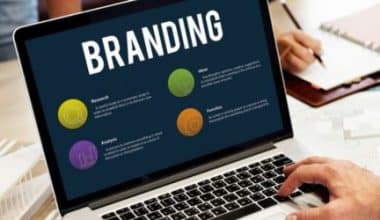As someone who is actively involved in maintaining our brand’s digital presence, I’ve realized that brand safety is more important than ever. In today’s quickly changing digital landscape, brand safety concerns are getting more sophisticated and widespread. When I first encountered brand safety issues, it felt like I was walking into a minefield—one wrong move could seriously harm our brand’s reputation. To assist you traverse this challenging landscape, I’ve compiled a list of the top 9 dangers to brand safety in 2024, supported by statistics and insights that many websites overlook. These insights will help you safeguard your brand effectively.
What is Brand Safety?
Brand safety is a digital marketing term that refers to how successfully a brand is protected from being connected with unsuitable or objectionable content.
In reality, this means ensuring that ads are not positioned next to content that has the potential to hurt or negatively impact the consumer’s perception of the brand.
The Interactive Advertising Bureau (IAB) defines brand safety as the practice of protecting a brand’s reputation in the digital advertising ecosystem. However, there is no one-size-fits-all method for protecting an advertiser’s brand, and brand appropriateness plays an important part in limiting possible hazards.
According to the IAB, “Brand safety is in the eye of the beholder—it all depends on what is and is not appropriate for the brand.” For example, an R-rated action picture may have different criteria than a baby product manufacturer.”
According to a recent study, 60% (PDF download) of adults in the United States now consider a brand’s reputation, brand values, or environmental, social, and governance (ESG) position as the “most important” factors when making a purchase, so advertisers are prioritizing brand safety in their online advertising strategies.
What is the Difference Between Brand Safety and Brand Suitability?
The concept of brand appropriateness is linked to brand safety. Brand safety is about avoiding improper content, and most audiences can agree on what falls into those categories. In contrast, brand appropriateness is unique to each specific brand. Brand appropriateness refers to matching your adverts to material that reflects your specific values, identity, tone, and other subjective characteristics.
A vegan brand, for example, may not consider an app about hunting and fishing to be an appropriate placement for their advertisement, even though hunting and fishing are not intrinsically unpleasant themes to everyone. A website that has a highly casual and amusing tone may not be appropriate for a corporation with a more serious brand voice. A company that makes educational toys for children may not find content about how to prepare a cocktail appropriate for their brand.
Brand safety refers to the protection of your brand against harm. Brand appropriateness is about supporting and strengthening your unique brand identity by identifying which forms of material resonate with your brand and avoiding associations with content that does not.
How To Build Safe Campaigns
Brand safety procedures preserve your brand’s reputation by lowering the danger of association with content that is not brand-safe. These excellent practices should become a part of your continuous advertising plan.
#1. Determine your brand safety and appropriateness standards
To safeguard your brand when advertising, you must first identify your top criteria for brand safety and compatibility. While some information may be inherently unsuitable for all businesses, other potential concerns may be less important to different brands.
For example, alcohol-related information may be inappropriate for some brands, while alcohol brands may be fine with advertising alongside this type of content.
Identifying your priorities will help you focus your efforts on what is most important to your brand.
#2. Select a reliable programmatic supplier
Selecting a reliable demand-side platform (DSP) is critical for decreasing risk in programmatic advertising. High-quality inventory sources will help you avoid several of the most prevalent sorts of dangerous material. Your advertising technology (ad-tech) providers can be allies in protecting your brand; inquire about the safeguards they have in place to maintain brand safety.
#3. Use inclusion and exclusion lists
Determine inventory inclusion and exclusion using the targeting options provided to you. Your inclusion lists may include reputable apps and websites, as well as specific topics and phrases related to your brand. Exclusion lists might help prevent your advertising from appearing on untrustworthy domains or with improper keywords.
#4. Keep brand safety in mind
Brand safety is not a one-time checklist item, but rather a continuous activity. Brands must periodically evaluate potential threats to their brand safety. Look for tech companies that give transparency and strict quality standards, as they will instantly block inappropriate content. Keep your inclusion and exclusion lists up-to-date. Monitor your brand impression and do audience research to better understand how they perceive your reputation and ideals. Vigilance is a long-term investment in your brand’s safety.
Top 9 Threats To Brand Safety
#1. Ad Fraud
Ad fraud continues to pose a substantial danger to brand safety. According to Juniper Research, ad fraud will cost marketers $100 billion worldwide by 2024. Ad fraud can take various forms, including bogus visitors, click farms, and malicious bots, all of which lose ad spending while also skewing data and harming your brand’s trust.
Key Takeaway: Use advanced fraud detection techniques and engage with trusted ad networks to reduce the danger of ad fraud.
#2. Inappropriate Content Association
Displaying your adverts next to unsuitable or hazardous content can affect your brand’s reputation. According to a survey conducted by Integral Ad Science in 2023, 47% of people would stop purchasing a product they routinely buy if it was advertised alongside offensive content.
Key Takeaway: Use stringent content adjacency restrictions and partner with platforms that provide strong brand safety safeguards.
#3. Fake news and misinformation
The proliferation of fake news and misinformation may unwittingly identify your brand with misleading stories. According to the Edelman Trust Barometer, 70% of customers struggle to distinguish between true and fake news.
Key Takeaway: Keep an eye on the media settings in which your advertising appears and steer clear of outlets renowned for propagating disinformation.
#4. Data Privacy Violations
Data privacy infractions can result in serious legal and reputational consequences. According to Cisco’s 2023 Data Privacy Benchmark Study, 84% of customers are concerned about data privacy and want greater control over how their data is used.
Key Takeaway: Comply with data protection rules such as GDPR and CCPA, and be clear about your data practices.
#5. Risks from User-Generated Content
User-generated content (UGC) has the potential to be both beneficial and detrimental. While it might increase interaction, it may also expose your brand to improper or harmful information. According to a Stackla survey, 79% of respondents feel user-generated content has a significant impact on their shopping decisions, but it must be carefully managed.
Key Takeaway: Implement strong moderation procedures for user-generated content to retain a positive brand image.
#6. Pitfalls of programmatic advertising
Programmatic advertising is efficient, but it also carries hazards, such as a lack of control over ad placement. According to the World Federation of Advertisers, 65% of brands suffered brand safety incidents while using programmatic purchasing.
Key Takeaway: Utilize programmatic advertising systems that offer transparency and control over ad placement.
#7. Risks of Influencer Marketing
Working with influencers can benefit your brand, but there are pitfalls if the influencer behaves badly. According to Mediakix, 61% of marketers have encountered concerns with influencers, ranging from fraud to reputation damage.
Key Takeaway: To safeguard your brand, carefully screen influencers and set explicit standards and contracts.
#8. Negative Press and Public Relations Crises
Negative press and public relations crises can result from a variety of events, including corporate scandals and product recalls. According to a Weber Shandwick survey, 83% of executives believe that reputational risks are increasing in today’s business environment.
Key Takeaway: Create a complete crisis management strategy and keep communication channels open with your audience.
#9. Cybersecurity Threats
Cybersecurity concerns such as data leaks and hacking can seriously harm your brand’s reputation and trustworthiness. According to Cybersecurity Ventures, cybercrime losses are expected to cost the world $10.5 trillion per year by 2025.
Key Takeaways: Invest in strong cybersecurity safeguards and train your personnel on best practices for preventing breaches.
Best Practices in Brand Safety
As a marketer, you must take steps to protect your brand. By including a brand safety check in your marketing process, you can ensure that your brand is protected online. Here are some things you can do today to keep your brand safe.
#1. Define what brand safety means to you.
The IAB and other organizations have established an industry-standard definition. However, you must define it for yourself. This is significant because, unlike other metrics, brand safety is subjective.
Consider the previously mentioned list of harmful content; what is inappropriate for one brand may be acceptable for another. A gaming company’s contextual tolerances may differ significantly from those of a kid’s app creator.
#2. Prioritise transparency
According to Bannerflow Product Owner Björn Karlström, “You must know where your banners are served. And you should know where your money is going in the ad tech chain.” Without this data, your media spending is out of control, you can’t make sound judgments, and you’re vulnerable to fraud.
In-house initiatives are one approach for brands to take control of their media procurement strategy. Indeed, enhanced transparency was regarded as the third most important motivation for decision-makers to bring their marketing in-house by Bannerflow/Digiday.
#3. Select a trusted programmatic supplier or agency
Make sure you use a trustworthy agency or programmatic platform. It is one of the most crucial things you can do to ensure brand safety. Thus, selecting a programmable platform is crucial. Brad Bender, VP of Product Management at Google, recommends four questions before selecting:
- How many inventory providers are you planning to use?
- Where do you want your advertisements to appear?
- How seriously do you take audience targeting?
- What tools do you need to achieve your goals?
#4. Opt for superior inventory
If your brand’s safety is a top priority, you should only use quality merchandise. This option is more costly than blind bidding, for example. However, you will ensure that your adverts do not appear on dangerous domains or web pages.
#5. Avoid blacklisted publishers
This might sound apparent, yet prohibited publications can be appealing. Especially given their low costs and aggressive marketing. However, picking a banned publisher puts your brand’s safety at risk.
#6. Use insights to track campaigns in real-time.
To maximize the effectiveness of your efforts, employ real-time data to track where your adverts appear. If you discover that your brand has been compromised, take action immediately. Using insights, you may adjust any campaign settings or targeting.
Heatmaps can also help you track potential bot traffic on your adverts. In fact, many bot clicks may be seen at the same location each time. Recognizing these tendencies and taking action alongside an ad fraud detection partner can have a significant impact on the performance of your ads.
#7. Use the campaign’s “negative target” or exclusions.
Most programmatic publishers will let you eliminate negative targets when you create your campaign. Facebook, for example, allows you to omit almost anything you wish to avoid.
When creating your advertising, consider your brand’s definition and begin excluding damaging inventory. This is not a foolproof technique to protect your brand. However, it is one of the most aggressive steps you can take to ensure that your advertising appears only where you want them to.
#8. Look at third-party data
If brand safety is particularly important, search for companies that provide third-party certification. These companies offer to verify websites and pages before publication. Ensure that your ads do not appear on dangerous websites, pages, or before content.
The Use of Templates to Improve Brand Safety
Using a Brand Safety Template allows you to address possible dangers systematically and adopt best practices. This template offers a methodical approach to ensure that all areas of brand safety are addressed, including ad placement and data privacy.
To ensure your brand remains safe and protected in today’s digital landscape, download our comprehensive Brand Safety Template. This template will provide you with a structured approach to addressing potential threats and implementing best practices to safeguard your brand.
Conclusion
In 2024, the challenges to brand safety are more diverse and sophisticated than ever. Understanding these top 9 dangers and applying preventive actions can help you safeguard your brand and keep your audience’s confidence. Have you encountered any brand safety issues? What strategies have you implemented to protect your brand? Let’s continue the conversation in the comments section.
Related Articles
- Brand Crisis Management: 7 Tested Tips
- Expert Tips to Measuring Brand Equity in 2024 (Detailed Guide)
- Brand Assets: 15 Examples That Will Strengthen Your Band
- Brand Engagement: Meaning, Importance & Helpful Tips
- Why Does Brand Recognition Help Businesses? 2024 Case Studies






